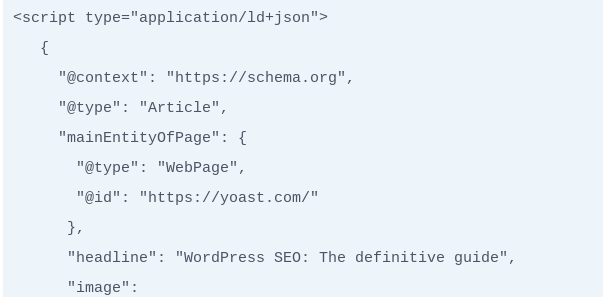The success of many businesses depends on their visibility to clients. Each year, company owners become increasingly aware of how well-designed Search Engine Optimization (SEO) content strategies help maintain and grow the traffic on their sites. However, ensuring that a company’s website stands out on search engine result pages (SERPs) also requires continued awareness of technical SEO developments and their strategic integration, like harnessing the power of structured data to achieve more prominent search results. To help, the following aims to demystify how to gain rich snippets and why using schema markup and structured data plays such a meaningful role in your SEO strategy.
An Overview of Key Schema Markup-Related Terms
Whether you are just beginning your digital marketing efforts or an industry veteran, your vocabulary will grow continually, as you learn key digital marketing terms. Familiarity with this essential terminology makes it easier to understand the value of SEO and how new tactics will help your website gain more traction in SERPs. The importance of knowing the language and leveraging it for expression and understanding also defines the relationship between schema (schema markup), structured data and rich snippets (otherwise referred to as rich results).
-
Schema (often used interchangeably with schema markup)
Originally founded and developed by companies like Google and Microsoft, schema is the shared code language and format for structured data. There are currently 803 types of schema markups according to schema.org. Just as you’d expect everyone at the annual convention for your profession to use and understand the language of your particular business, the intention of this organization is to enable communication and optimize content expression across any platform, application, etc. Essentially, schemas help search engines better understand the content on your web pages. They provide the roadmaps for search engines to navigate and interpret your site’s information accurately.
-
Structured Data
Where schema markup acts as a label to communicate shared coded language, structured data is the organized information within that label. To simplify, structured data is the visual representation of information on a webpage. Conversely, schema markup is how that information is communicated to search engines (such as Google).
Additionally, the information or data within the schema markup includes descriptions about the content of a page as well as actions that are available for users (or, the visual representation so to speak). It is also what search engines use to help determine which pages to show in response to a particular search query. Much like nuanced SEO keyword research helps ensure that the most useful blog types and content can be created, the mindful selection of schema type and its completion with structured data determines a page’s ranking on the results page.
This brief illustration (shared by Yoast) provides one example of schema markup in the generalized code language to the left of the colon like “context”, “type”, and “headline” and the structured data content such as WebPage and “WordPress SEO: The definitive guide” to the right of the colon.

-
Rich Snippets (also known as rich results)
Whenever a user conducts a search, they receive a series of SERPs (search engine results pages). At the top of some SERPs, they’ll find rich snippets, which are enhanced results distinguished by their inclusion of information like average user ratings, reviews, images or videos, FAQs, event details, pricing, and more. In short, these rich results provide users with quick snapshots of what web pages have to offer and help them decide whether or not to click on a particular page. The visual below is an example of a rich snippet based on a search for “exercise equipment.” Note the inclusion of a visual, ratings, return policy and specific types of equipment.

Looking for an even more in-depth breakdown of this terminology and tips on how to add structured data to your own site? Find further information in this visual guide from SEO software provider, Yoast.
Using Schema and Structured Data to Create Rich Snippets
With careful attention to the use of the right schema and structured data integration on your site, you have more control over how search engines interpret and display your content. By highlighting specific information on your web pages, search engines are better able to share these details as rich snippets. In the exercise equipment example, the schema markup is the reason that Google provides the inclusion of ratings, types of equipment, and return policy in the search results. The greater depth of this presentation attracts users’ attention and may increase their likelihood to click on your page. Behind the scenes of this user-facing result, the additional code nuances provided through the implementation of schema and structured data can also boost a website’s credibility according to the search engine being utilized. Better credibility further assures top placements in the SERPs.
Optimizing your SEO with Structured Data and Rich Snippets
Although content trends may seem to be constantly in flux, rich snippets are a solid cornerstone of modern SEO. They provide an incredible opportunity to captivate user attention, improve CTR (click-through rate), and outshine competitors in SERPs. Especially with the continued evolution of search engines and increased use of voice assistants like Alexa, dedicated attention to structured data and its upkeep becomes increasingly vital.
Structured data requires thoughtful development and continuous monitoring, as discussed in greater detail by Semrush. Search Engine Journal further emphasizes the importance of regularly evaluating and fixing any structured data errors. Remember: as search engines update algorithms and new rich snippet formats emerge, careful attention to structured data opportunities and adapting to them can give your website a powerful advantage in the extremely competitive digital marketing landscape.
By now, harnessing schema markups and structured data is the way to watch your website not only rise to the top of the SERPs with its rich snippets but also enhance your entire SEO strategy. So, why isn’t everyone using this strategy and enjoying its many benefits? As you may have discovered in evaluating digital marketing agencies, using, tracking and sharing data and facilities with both the front and back end of digital marketing operations are not consistent across companies. However, using a data-driven approach is the primary focus at All Points Digital. Although many digital marketing specialists may share research and data to support their strategies, APD has the unique ability to integrate the best of content marketing and website development strategies simultaneously. Contact us today to leverage the power of schema markups and structured data or to start collaborating with us on other activities!





